Top Elementary School PE Games Your Students Will Love
January 11, 2024
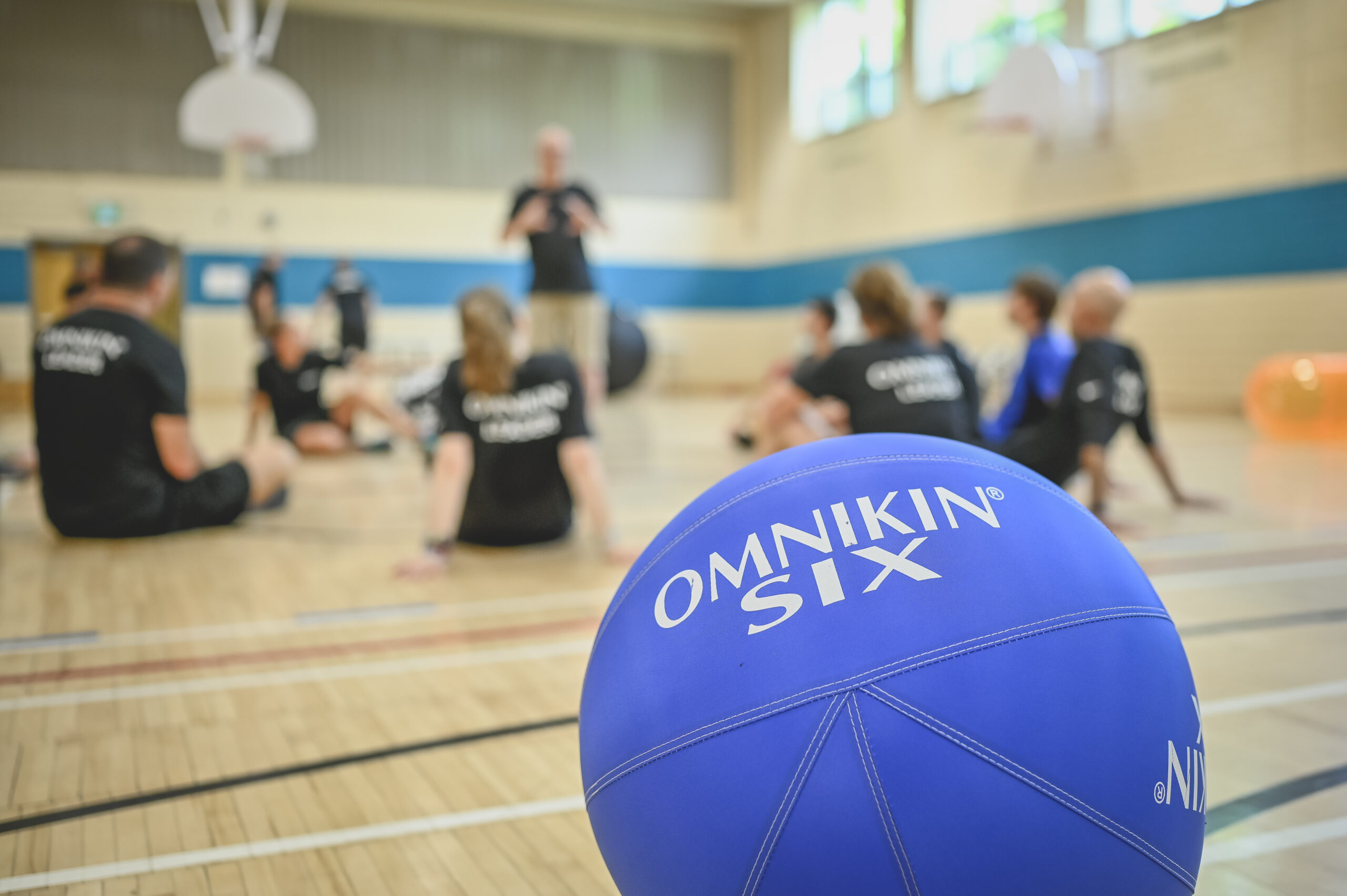
In the energetic, never-a-dull-moment world of elementary PE classes, it can be challenging and, of course, rewarding, to teach fundamental physical skills—all while keeping youngsters engaged and helping them develop a love for physical activity.
But even the most seasoned PE teachers can run out of ideas for creating fun elementary PE games for students. So what can a busy PE teacher do to switch things up and create physical education games kids will enjoy?
Consider Omnikin games.
Omnikin balls, with their vivid colours and funky sizes, are revolutionizing the way PE teachers stoke children’s interest in movement. And they are not just for older crowds; Omnikin sports equipment, with their ease of handling and maneuverability, make them perfect for elementary school PE classes.
Let’s explore how some Omnikin games and balls can enhance your PE curriculum to captivate your elementary school students.
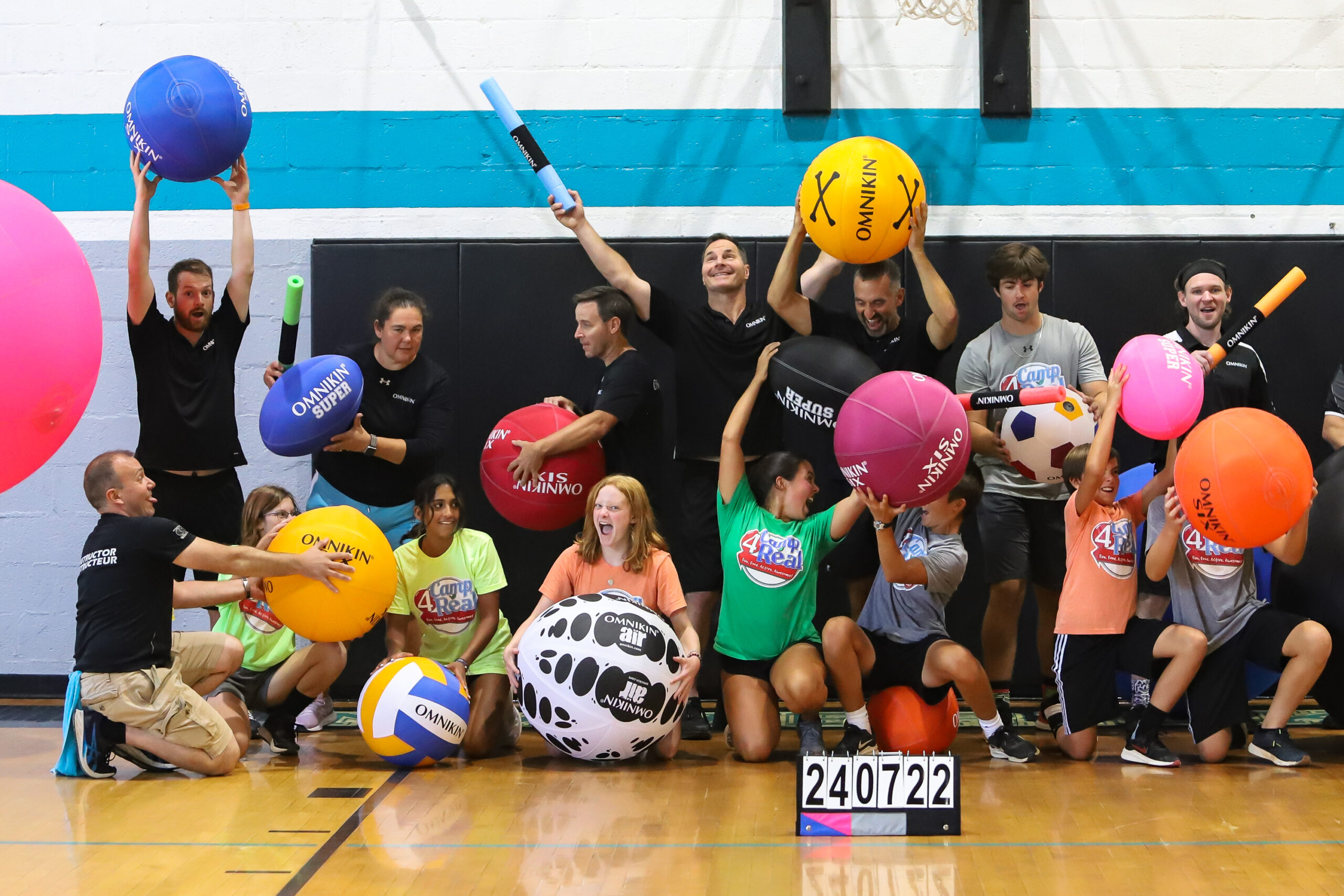
Omnikin Yoga
A serene twist on traditional yoga, Omnikin Yoga uses larger-than-life balls to help little ones learn balance and coordination, making yoga poses more accessible. Thanks to the colourful balls, yoga becomes a fun PE game
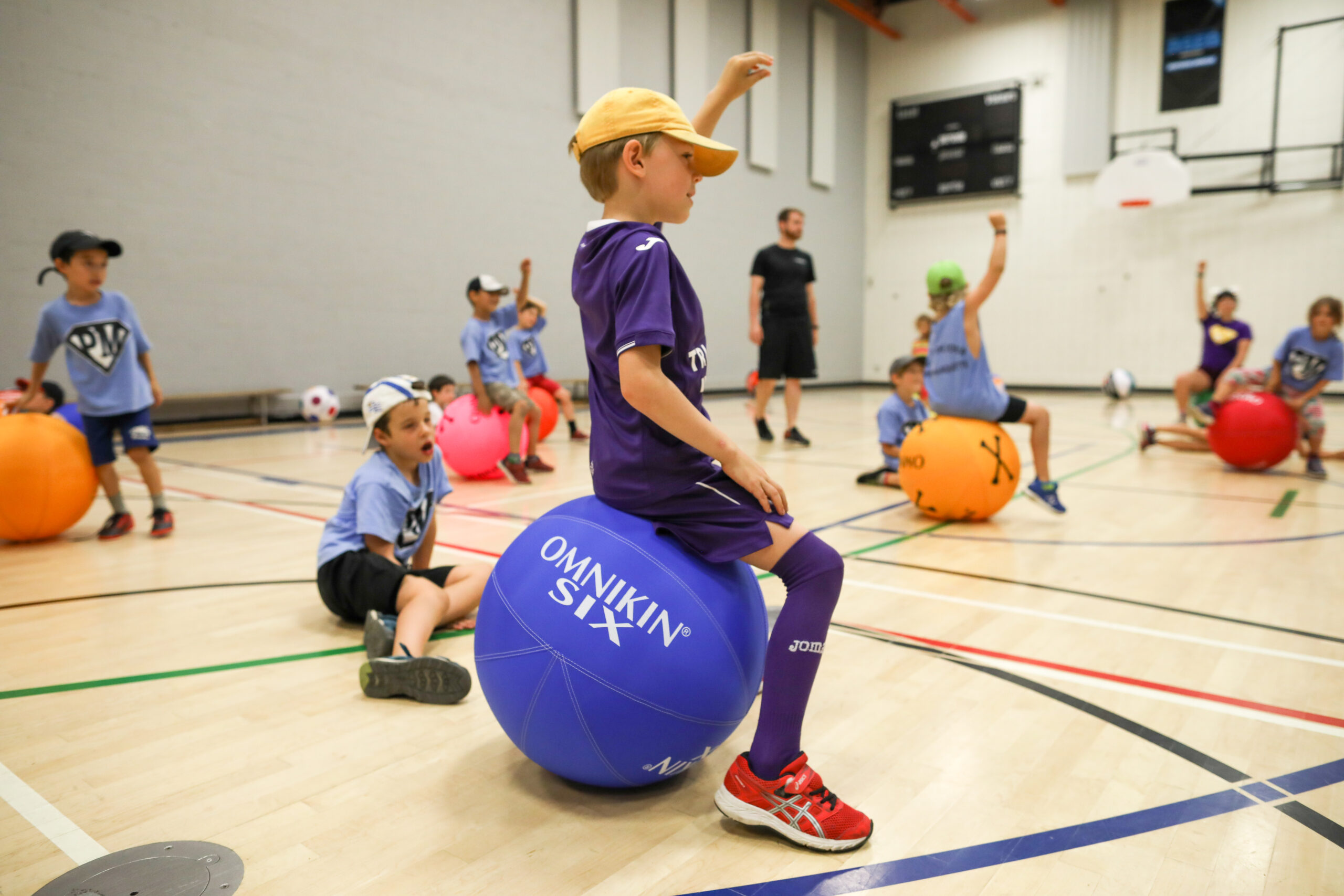
Objective: Maintain various yoga poses and keep their balance
How you teach it: Divide your class into small teams, with each group consisting of 2 to 4 students, and provide each team with an Omnikin ball. Ensure there’s ample space between the groups in the gym to allow for free movement. Assign each student a number for easy identification and instruction. As the teacher, you’ll model a stance or movement, and then, on your cue, each student will attempt to mimic the demonstrated position.
Required equipment:
3-4 participants with one of these balls:
Pedagogical intention: Be able to balance in several different ways on a ball with different types of support.
Noodles Duel
Noodles Duel is a lively game that fosters dexterity from buoyant foam noodles. Students can work on hand-eye coordination and engage in friendly competition, promoting individual skill development and teamwork.

Objective: Students play 1 on 1; the goal is for one of them to win the duel!
How you teach it: Pair up students for this engaging activity, ensuring each has a foam noodle. Have them stand face-to-face, starting with their noodles gently touching at the ends. On the count of three, one partner shouts “Go,” signalling the start of the round. The objective is simple yet fun: use the noodle to gently tap the other’s shoe.
Required equipment: 1 Omnikin noodle per participant
Pedagogical intention: Be able to evaluate the optimal distance to hit without being hit.
Bubblegum Bulldog
Bubblegum Bulldog is sure to get kids’ hearts racing! It’s a fun and safer take on the classic game.

Objective: To be the last survivor
How you teach it: Instruct the students to line up at one end of the gym, preparing to dash to the other side on your mark. The challenge is to get from one side to the other without being tagged by the ‘statues’ holding Omnikin balls. When you give the signal, the students will begin their crossing. After everyone has reached the opposite line, signal once more for the next round to begin.
Required equipment:
One of these balls:
Pedagogical intention: Be able to reach a zone while avoiding defenders.
2 Dogs for a Bone
In this dynamic game, two “dogs” (teams) vie for a “bone” (the Omnikin ball), encouraging students to strategize and collaborate. The size of the Omnikin ball levels the playing field, making the game more inclusive and fun for all skill levels.
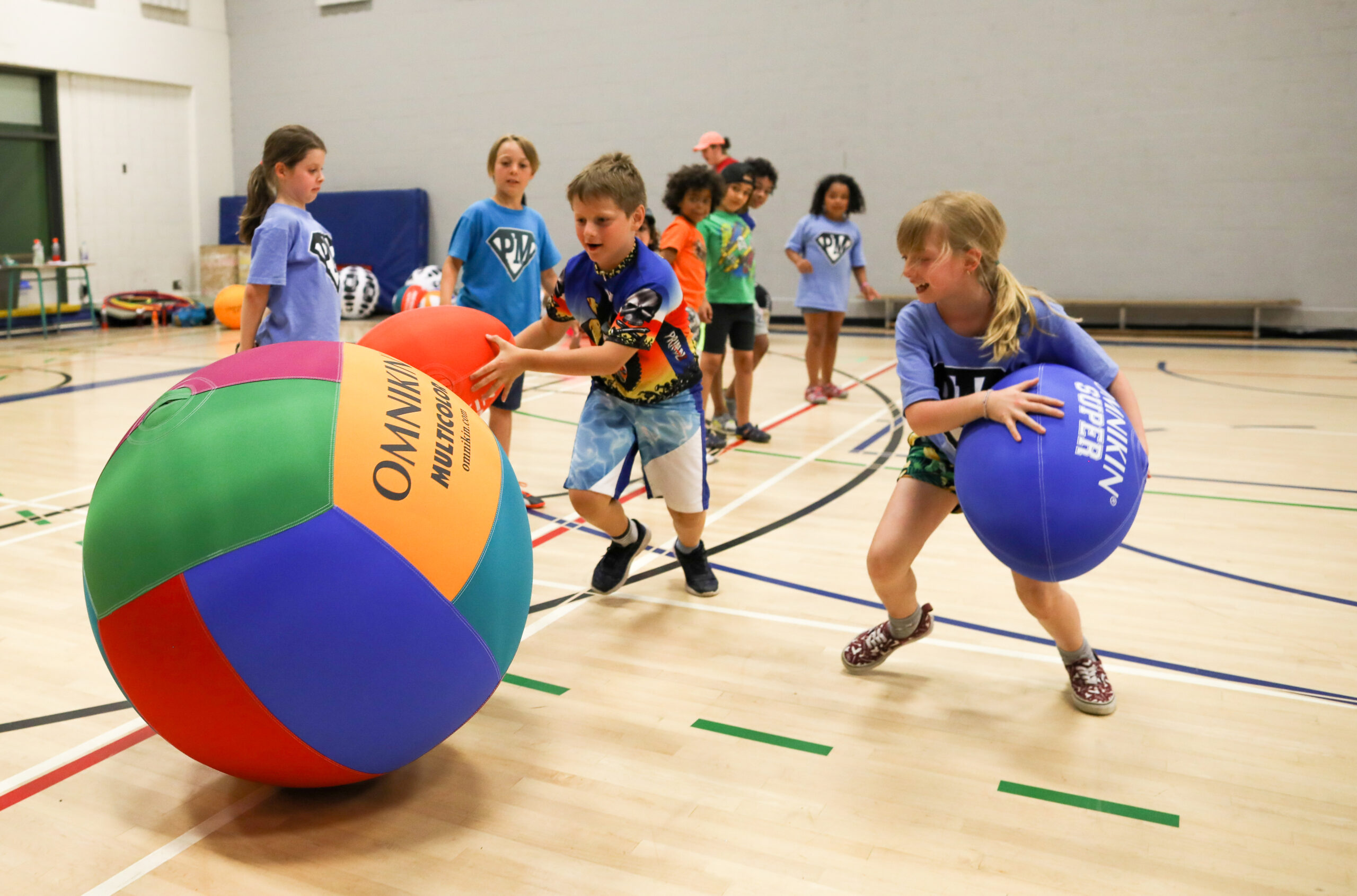
Objective: Earn the most points as a team
How you teach it: Form two teams and have them face each other across a five-meter gap, with an Omnikin ball (“the bone”) placed in the middle. Assign matching numbers to opposite members in each line, with the first players at the ends. Appoint one person in the middle of each line as the “leash keeper,” who will handle a smaller ball (“the leash”). The “doghouse” is the gym wall nearest to the first players’ position. When you call a number, the corresponding players race to grab their team’s leash and then aim to maneuver the bone back to their doghouse using only the leash. If players drop their leashes, they must retrieve them before continuing to guide the bone.
Required equipment:
One of these balls :
And two (2) Omnikin Super balls
Pedagogical intention: Be able to use a tool to move an object to a target while facing an opponent.
Fassen-Ball
Fassen-Ball is a team-based game that emphasizes communication and teamwork. The larger size of the Omnikin ball ensures that all students can participate, focusing on the game’s cooperative aspects over individual skills.

Objective: Teams try to score the most goals
How you teach it: At the start of the game, one team gets the Omnikin Fassen-Ball. Players should roll the ball on the ground using one or two hands. Lifting the ball with both hands for passing or shooting is not allowed, but one-handed air passes are fine. If the ball is in the air, players can put it down, shoot, dribble like in basketball, or pass it volleyball-style, but two-handed passes are off-limits.
Required equipment: 1 Omnikin Fassen-Ball
Pedagogical intention: Be able to score in a goal protected by a goalkeeper.
How to get started with Omnikin PE games
When rolling out Omnikin ball games in your PE class, it’s important to begin with the basics. Break down the instructions and rules into simple, easy-to-follow steps. Start with the core objectives of each game and demonstrate the fundamental movements. By doing so, you cater to students of all skill levels, ensuring that no one feels left out.
Aim for inclusivity by adapting the games to accommodate different abilities; this can mean modifying rules or creating roles that allow every student to participate meaningfully. Keep the focus on teamwork and group success rather than personal achievement, which encourages a supportive environment where students cheer each other on, regardless of their athletic ability. This approach not only simplifies the learning process but also creates a fun and inclusive atmosphere where all students are motivated to engage and enjoy.
In conclusion, the integration of Omnikin balls and games into your PE program can transform your gymnasium into an exciting learning environment. As educators, our mission is to create spaces where fitness and fun coexist, ensuring that every child finds joy in movement.
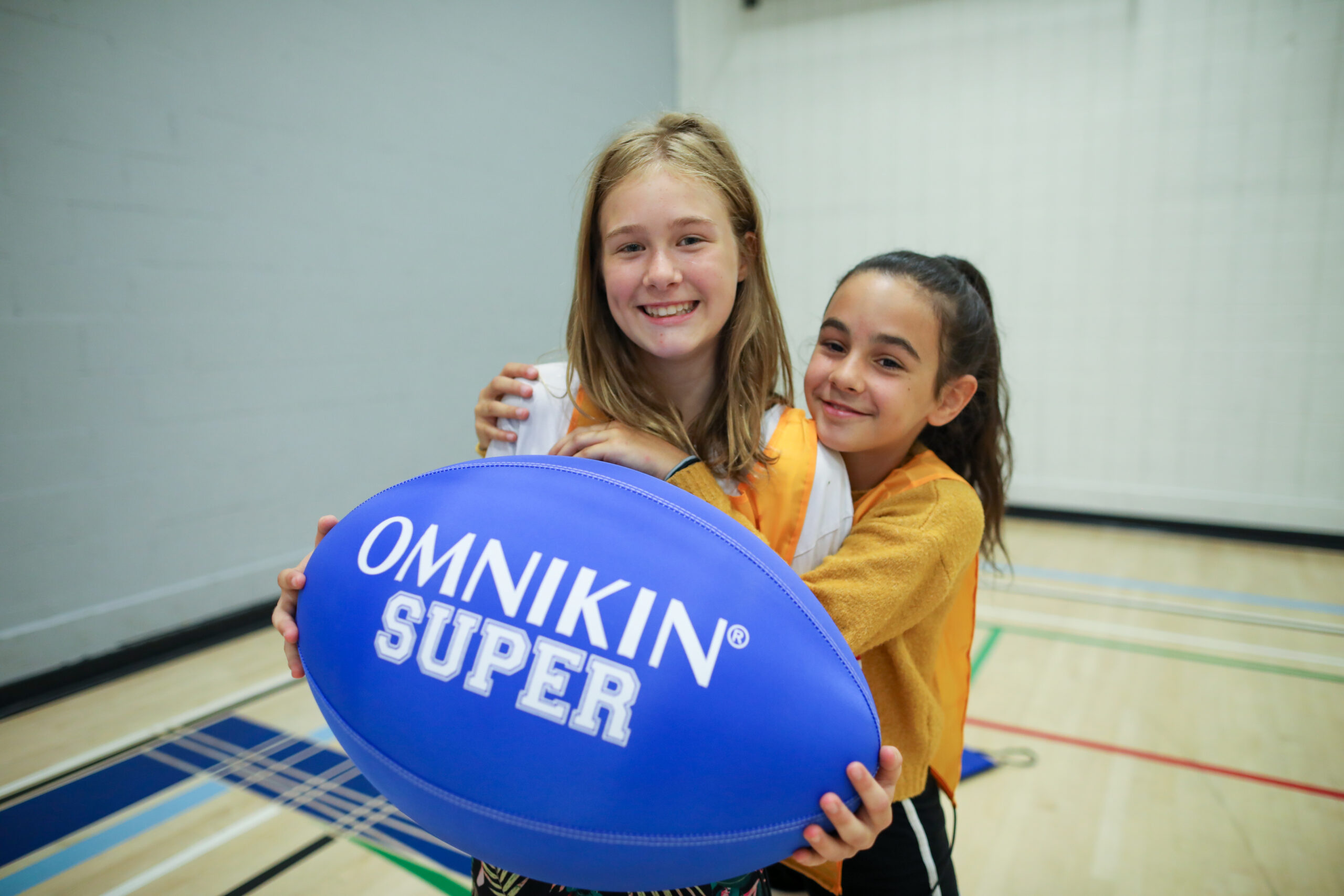
So, let’s roll out those Omnikin balls and watch as our students bounce into action with enthusiasm and delight!
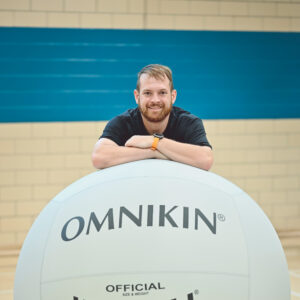
Physical education teacher
International Workshop development coordinator
Profil LinkedIn
